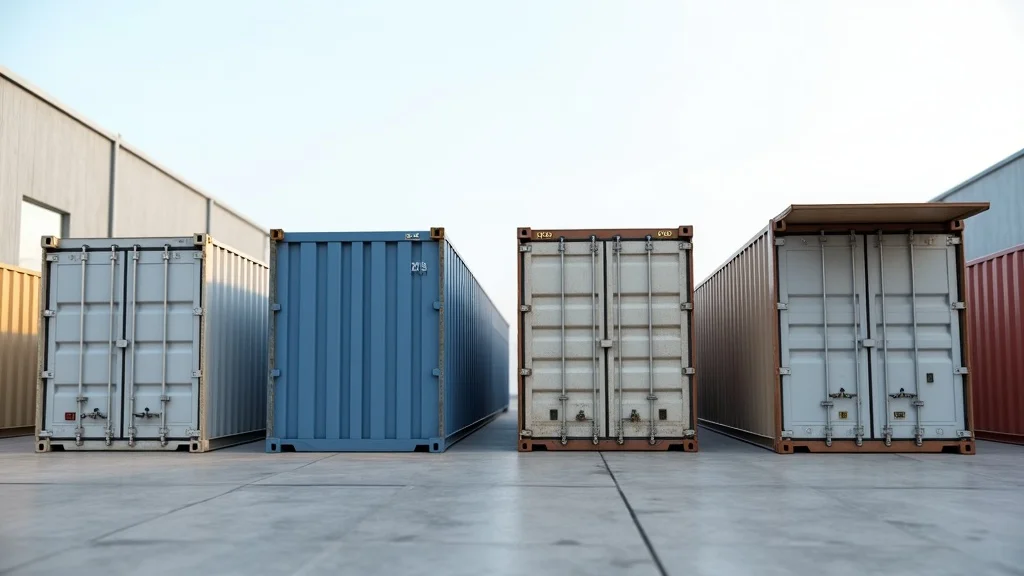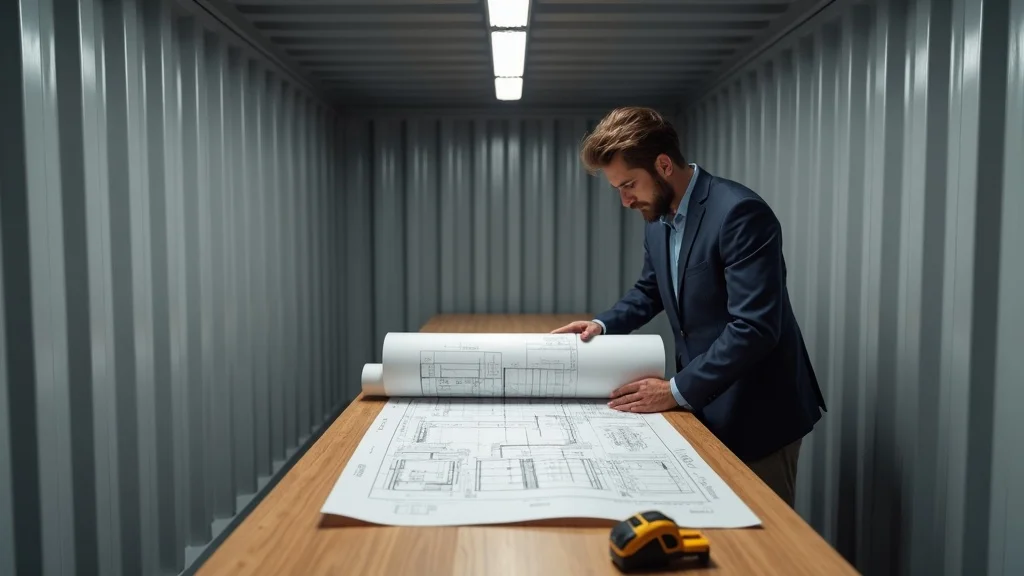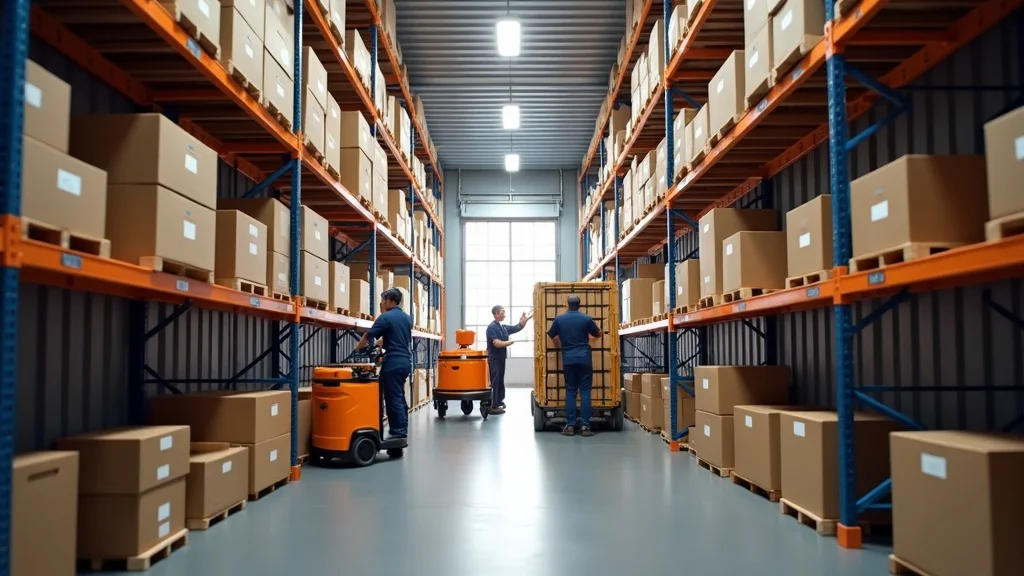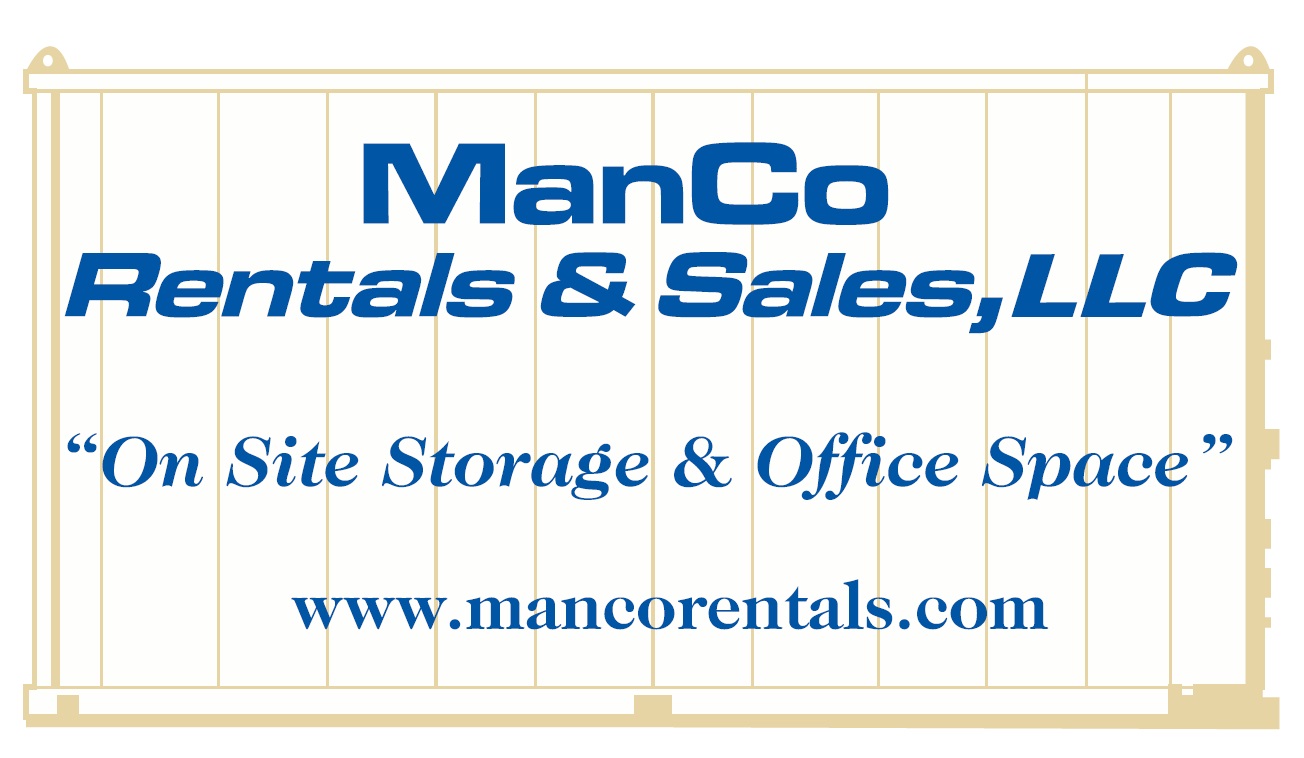Did you know that over 30% of standard shipping container space is wasted due to poor planning? For businesses and individuals who use shipping containers for storage, modular building, or even living spaces, this inefficiency equates to lost money, wasted time, and unnecessary frustration. Whether you’re managing a fleet for business days or buying your first container, this guide delivers smart, actionable tips to help you turn every inch of your shipping container into a high-functioning, cost-saving asset.
Startling Facts: Why Shipping Container Organization Matters More Than Ever
Shipping containers are being used in ways most people would never imagine. From pop-up stores and compact office spaces, to home gyms, workshops, and even wine cellars, the versatility of shipping containers is driving their popularity. Businesses are leveraging container specialists to build modular buildings for their sales teams, while homeowners integrate them as affordable storage solutions or unique living spaces. This surge in unconventional use means maximizing every cubic foot is critical to cost-effectiveness and operational success.
-
Unconventional uses of shipping containers in business and personal settings
-
Statistics on average unused space in shipping containers and its cost implications
In fact, industry studies reveal that a staggering amount of valuable space is left unused within most shipping containers. When assessed, the average container user could save hundreds (sometimes thousands) by planning out the internal capacity more efficiently. This doesn’t just impact your wallet; it directly influences workflow on busy business days, reduces shipping costs, and extends the lifespan of your storage solution.
“Over 30% of standard shipping container space is often wasted due to poor planning — optimizing layout makes immediate financial sense.”
What You’ll Learn About Shipping Container Space Optimization
Optimizing your shipping container is more than stacking boxes until the doors won’t shut. In this buying guide, you’ll learn how to use every square inch for your advantage. Whether purchasing for personal storage or as part of a business operation, implementing these organization systems will save time and money, while increasing the safety and accessibility of your contents.
-
How to assess and measure your shipping container
-
Organization systems for various business days and operational needs
-
Time-saving storage solutions and their cost benefits
-
Expert-recommended shelving and stacking methods for shipping containers

Understanding Shipping Container Basics for Efficient Use
Before you dive into reorganizing or outfitting your shipping container, it’s essential to understand the fundamentals—especially as sizes range, container dimensions, and types have a direct impact on how you can use and modify your unit. Shipping containers come in a variety of lengths and styles to accommodate everything from compact cars to bulk industrial stock, so knowing what you have positions you to maximize its internal capacity effectively.
Types and Sizes of Shipping Containers
The standard options are the 20-foot and 40-foot containers, each with different internal capacity limits and loading capacity. The 20-foot is often compared to a one-car garage, ideal for storage or compact office conversions, while the 40-foot rivals the space needed for larger inventory or bulky smart equipment. Specialty designs like high cube containers (which add extra headroom), refrigerated units (“reefers”) for perishables, and open-top models for oversized items are available via container specialists and sales teams.
-
Standard 20-foot vs. 40-foot shipping containers
-
Specialty options: high cube, refrigerated, and open-top containers
Each type comes with its own pros and cons. For example, a 20-foot shipping container is easier to transport and place in tight business days with narrow access, while a 40-foot model offers a better price-per-cubic-foot ratio. Understanding the options ensures you select a container that best aligns with your project or organizational needs.
Shipping Container Features to Maximize Organization
Key features affect space and ease of organization. Lockboxes secure valuable assets, while vents and proper floor types prevent moisture and condensation. Interior modifications—like reinforced shelving, anchor points, and LED lighting—can greatly enhance everyday use, especially on busy business days. Consider working with a container specialist who can provide a detailed breakdown of container modifications and recommend options suitable for your sales team or storage solution needs.
-
Lockboxes, vents, and floor types
-
Interior modifications to enhance business days productivity
Comparison Table: Features of Popular Shipping Containers
|
Type |
Size Range |
Internal Capacity (cu. ft.) |
Best For |
Unique Features |
|---|---|---|---|---|
|
Standard |
20′ / 40′ |
1,170–2,390 |
General storage, modular building |
Basic security, weathering steel |
|
High Cube |
20′ / 40′ |
1,315–2,695 |
Tall items, equipment financing |
Extra foot of height, improved airflow |
|
Reefer |
20′ / 40′ |
Same as Standard |
Temperature-sensitive goods |
Insulation, cooling system |
|
Open-Top |
20′ / 40′ |
Similar to Standard |
Bulky, oversized loads |
Removable roof, easier loading |

Planning Your Shipping Container Layout for Maximum Efficiency
Efficient shipping container organization starts with a solid plan. The container’s internal dimensions and specs dictate which storage solution will produce the best return on your investment. Whether for international shipping, construction storage, or retail inventory, sketching a potential layout—before moving anything inside—sets you up for success and prevents costly rework.
Measuring and Assessing Usable Space in a Shipping Container
Begin with precise measurements. Use a professional tape measure and note the exact internal width, length, and height—factor in any grooves or insulation that may affect usable space. Make sure to consider features like vents, doors, and existing shelving when calculating loading capacity. With these numbers, create a sketch of your ideal layout. On busy business days, this blueprint will help your team maintain efficient workflows and quick access to inventory.
-
Tips for accurate measurements before introducing organization systems
-
Sketching your optimal layout for regular business days use
Don’t forget to map out key traffic lanes, ensure sufficient aisle width for carts or individuals, and leave space for priority access zones. Regular assessment helps you spot opportunities for small improvements and accommodates any change as business needs evolve.
Recognizing Common Mistakes in Shipping Container Organization
Many users underestimate how much can be gained by improving stacking patterns or choosing the right shelving systems. The most common errors include inefficient stacking, neglecting valuable vertical real estate, failing to balance loads evenly, and cramming boxes—leading to safety hazards and wasted time on retrieval. Avoid these pitfalls by implementing modular shelving, vertical organizers, and space-optimized pathways from the outset.
-
Inefficient stacking and missed vertical space
“A well-organized shipping container can free up to 25% additional storage capacity, stretching your budget farther.”

Essential Storage Systems to Improve Your Shipping Container Organization
The right storage solution can turn any shipping container into a streamlined powerhouse, especially as business days grow busier or storage needs fluctuate. Investing in modular shelving units, stackable bins, and wall-mounted organizers not only increases your container’s loading capacity but also enhances safety, accessibility, and workflow rhythm for your entire sales team.
-
Modular shelving units for shipping containers
-
Stackable bins and vertical organizers
-
Magnetized boards and tool hangers
-
Plan your shelf placement according to measured container dimensions.
-
Install uprights and fix them into the container’s steel frame for maximum stability.
-
Secure shelves at appropriate heights, prioritizing frequently-accessed items at waist level.
-
Add stackable bins below, and wall-mounted hangers or boards above as needed.
-
Double-check alignment and load distribution for safety before loading up inventory or equipment.
These setups make it easy to adapt as your inventory grows or changes. Containers with custom shelving and bin systems have become must-haves for businesses that want a detailed breakdown of container specs and features customized for their workflow.
For those seeking region-specific advice and practical examples, exploring the best storage solutions for shipping containers in Louisiana can provide additional insights into optimizing layouts and choosing the right systems for your unique needs.
Maximizing Vertical and Horizontal Space in Shipping Containers
The secret to unlocking a shipping container’s full potential lies in how you use its vertical and horizontal planes. Innovative stacking strategies and narrow aisles can lead to a significant boost in usable space and make every corner accessible—even on hectic business days, when every second counts.
Creative Stacking Techniques and Load Balancing
To get the highest yield from your container, organize inventory using both height and depth. Stack heavier, larger items on the bottom and lighter, smaller goods (even items like wine bottles or compact car tires) toward the top. Use shelving that reaches up to the ceiling, and always confirm load-bearing limits. Evenly distributing weight protects both your goods and the container—avoid putting too much stress on one area, as it could undermine both safety and loading capacity.
-
Best practices for even distribution of goods
-
Safety considerations for multi-layer arrangements
For businesses with rapidly changing inventory or frequent international shipping, these best practices help keep operations smooth, protect assets, and keep insurance options affordable.
Utilizing Narrow Aisles and Floor Space Solutions
Think beyond static shelves. Mobile shelving units—easy to slide or roll on tracks—allow for flexible configuration depending on that day’s needs. On busy business days, being able to adjust aisles or pull shelves forward for easier access makes a dramatic impact on workflow. Mark your main paths clearly and keep essential items within arm’s reach near the door or workflow center.
-
Mobile shelving for increased flexibility on busy business days
Layout Options—Max Efficiency for Shipping Containers
|
Layout |
Description |
Best Used For |
|---|---|---|
|
Wall-to-Wall Shelving |
Maximizes side walls for small-to-medium items, leaves aisle in center. |
Inventory storage, tools access |
|
Center Aisle/Open Layout |
Wide central path, quick loading/unloading, stacks on both sides. |
Bulk or palletized goods |
|
Mobile Shelving Units |
Shelves on tracks allow shifting for varied access and packing patterns. |
Dynamic merchandise, changing inventory types |

Climate and Security: Protecting Your Shipping Container’s Contents
To maintain the value and integrity of your inventory or personal items, don’t overlook climate control and security upgrades for your shipping container. This is especially true when storing sensitive materials, perishable goods, or high-value assets—whether for business or private use.
Climate Control Options for Shipping Containers
Effective climate management systems protect against rust, mold, and temperature damage. Insulation panels, added vents, and dehumidifiers help regulate temperature and moisture, especially in containers constructed from weathering steel. If storing items like standard mattresses, wine bottles, electronics, or sensitive documents, these solutions are not just helpful—they’re essential for maintaining quality.
-
Insulation, venting, and dehumidification solutions
Security Upgrades for Sensitive Materials
Upgrade exterior locks to heavy-duty models recommended by shipping container specialists, add bolt-on lockboxes for hidden padlocks, and consider wireless alarm monitoring systems. For high-volume or valuable inventory—think power tools, compact cars, or electronics—a combination of traditional and smart security makes it easy to monitor access and respond to threats in real time.
-
Best locks, alarms, and monitoring systems for shipping containers
“Our customers see a sharp drop in inventory loss after boosting their container security measures.”

Shipping Container Organization for Business Days: Streamlining Operations
For businesses, a well-organized shipping container can become an operational game changer. Imagine smoother inventory audits, faster deliveries, and less downtime thanks to a streamlined storage solution that was built with your actual workflow in mind. Organization experts recommend leveraging every organizational option—from color-coded labeling to adaptable shelving—to make it easy for your team to find and store items, no matter how hectic your business days get.
Workflow-First Arrangements in Shipping Containers
Design your layout around the tasks performed most often. If your sales team ships dozens of parcels each day, set up efficient packing stations near the entrance. Install shelving that places high-volume products at shoulder height, clearly label everything, and color code by category for instant recognition. Magnetic boards or digital inventory screens can display business day task lists, and flexible bin systems allow you to adjust for seasonality or changing sales trends.
-
Organizing for speed and accessibility
-
Color-coding and label systems
Case Study: Business Success Stories Using Shipping Containers
Businesses who’ve invested in professional container organization commonly report a 25% boost in productivity and double-digit drops in inventory loss. One local retailer revamped their container with vertical bins and a barcode-activated tracking system; the result was a streamlined restocking process and less confusion on the busiest business days. Another contractor’s sales team cut tool retrieval times in half using custom shelving and a label-first organizational scheme—real-world examples of how small improvements translate directly to savings.
-
How proper organization transformed operations and saved costs

People Also Ask About Shipping Containers
How much does a 40 foot container cost?
A 40 foot shipping container typically costs between $2,000 and $5,000, depending on condition (new vs. used), features, and location. Premium modifications and delivery service can increase this further.
How much should I pay for a 20 foot container?
Most buyers pay between $1,500 and $3,500 for a standard 20 foot shipping container. Factors influencing price include age, previous use, modifications, and local market demand.
What is the average cost of shipping a container?
The average cost of shipping a container internationally ranges from $1,200 to over $6,000, depending on destination, route, container size, and time of year.
Shipping Container FAQs: Quick Answers
-
What maintenance do shipping containers require?
Regular inspections for rust, sealing doors to keep out water, touching up paint, and checking door gaskets to maintain a weather-resistant seal. -
Can shipping containers be stacked safely?
Yes. Containers are designed for stacking (usually up to 7 high). Always follow the manufacturer’s guidelines and have a professional verify the base and alignment. -
How long do shipping containers last with proper care?
With routine maintenance, most containers made from weathering steel last 20–30 years or even longer. -
Are there insurance options for containerized goods?
Yes. Most providers offer coverage for contents and the container itself, especially for international shipping or high-value storage.
Key Takeaways for Streamlined Shipping Container Organization
-
Accurate measurement and planning prevent wasted shipping container space
-
Proper storage systems enhance both safety and efficiency
-
Custom climate and security features protect your container’s value
-
Ongoing assessment ensures your shipping container meets evolving business needs
Need Help With A Shipping Container?
-
Call ManCo Rentals & Sales at 877-915-7368 or Email brett@mancorentals.com to speak to a shipping container expert and optimize your space today.
Conclusion: Smart organization turns your shipping container into a powerful, efficient asset for business or personal use—start optimizing today for immediate results.
If you’re ready to take your container strategy even further, consider broadening your knowledge with a comprehensive overview of what you need to know about Louisiana freight containers. This resource delves into regulations, logistics, and advanced container applications, helping you make informed decisions whether you’re scaling up operations or exploring new uses. By understanding the bigger picture, you’ll be better equipped to maximize your investment and adapt to evolving industry trends. Dive deeper and discover how expert insights can elevate your container management to the next level.
